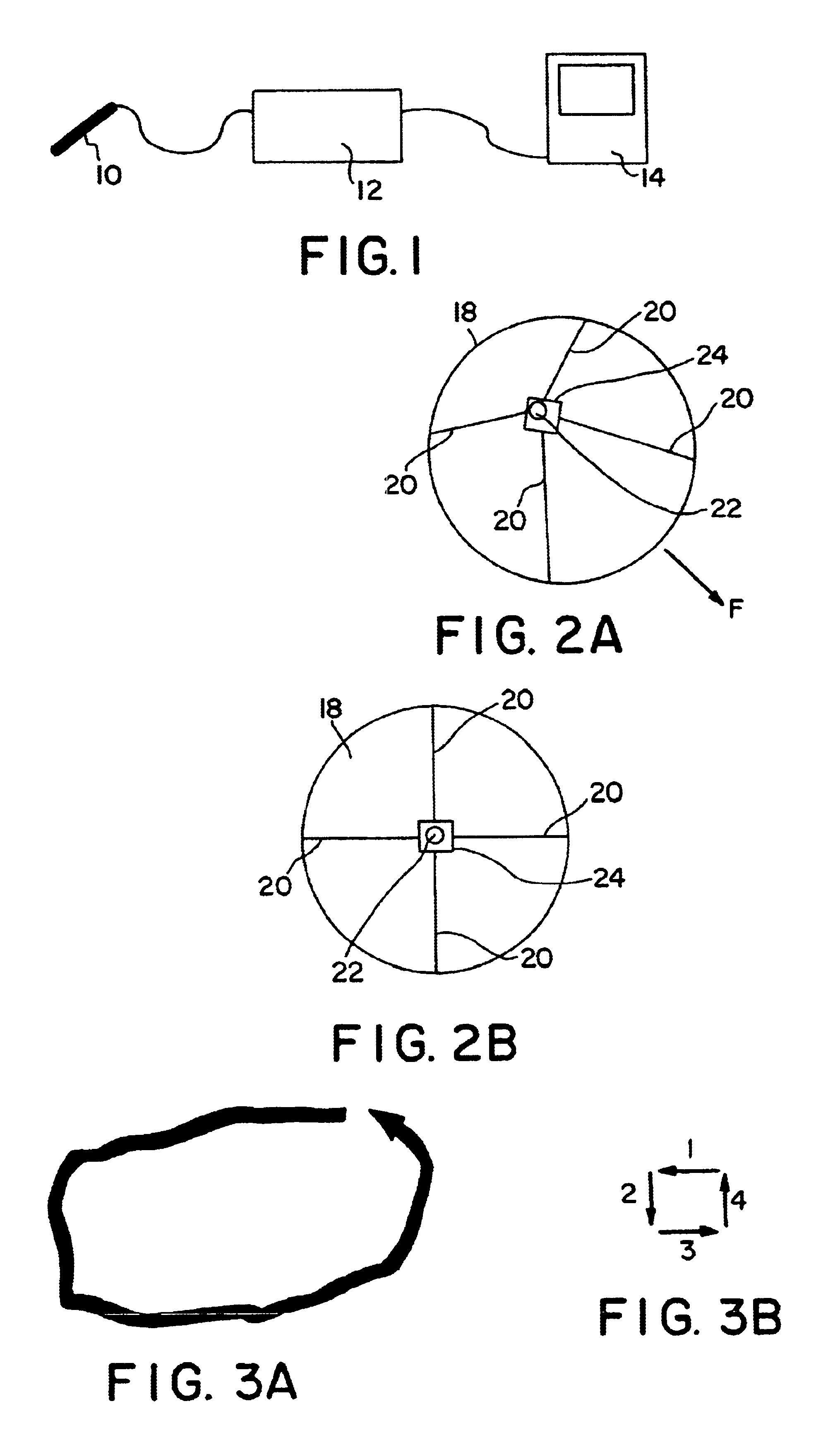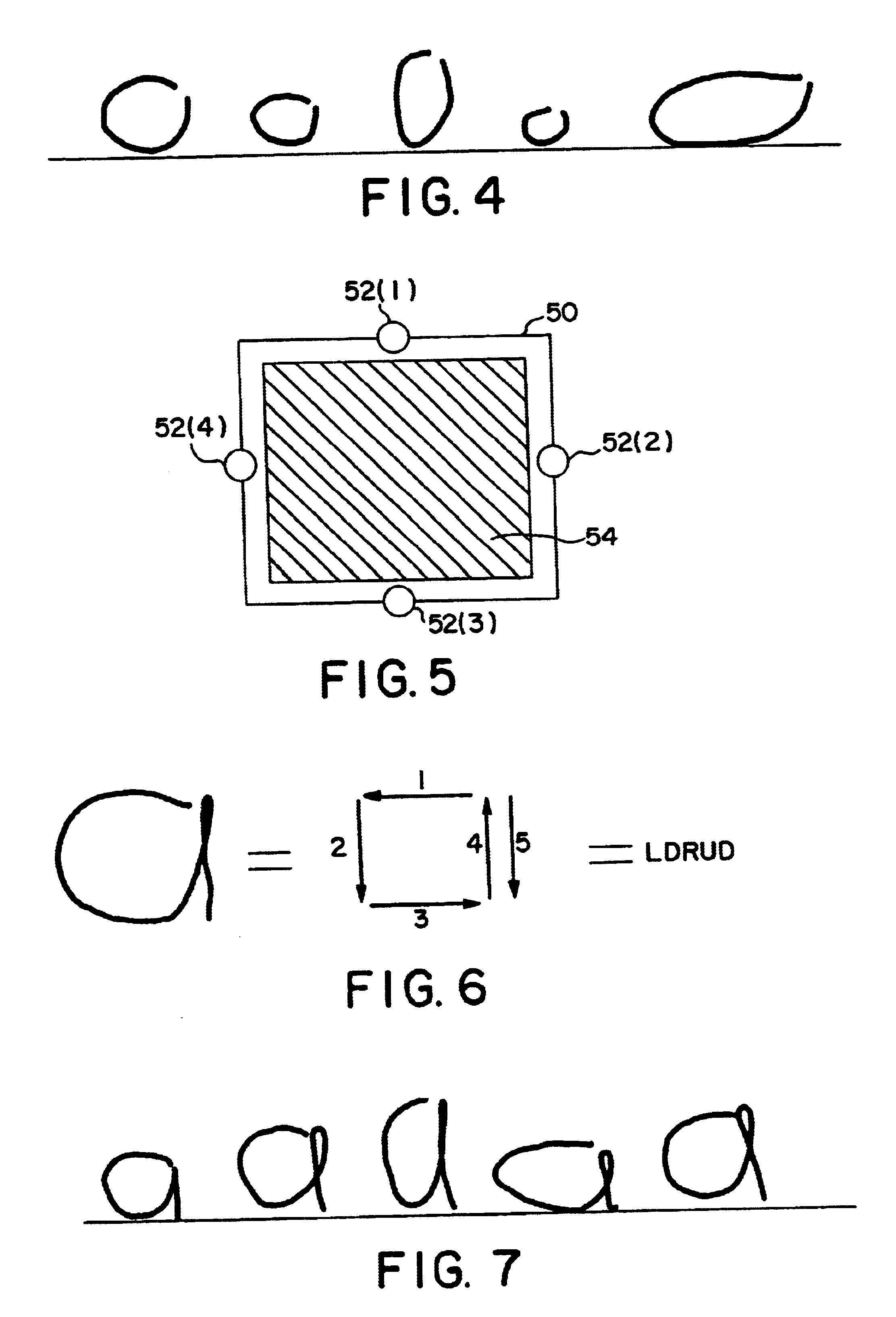Means for inputting characters or commands into a computer
a computer and character technology, applied in the direction of transmission systems, instruments, electric digital data processing, etc., can solve the problems of large and complex set of features, delay in the inputting process, and potentially ambiguous or unclear meaning of handwritten letters, agreements, contracts and other legal documents
- Summary
- Abstract
- Description
- Claims
- Application Information
AI Technical Summary
Problems solved by technology
Method used
Image
Examples
Embodiment Construction
Referring to FIG. 1 of the accompanying drawings, there is shown schematically an embodiment of the invention.
A pen device 10 contains a template which constrains the movements performed automatically by the fingers during handwriting and abstracts from these movements the elements that allow computer recognition. The result will be a "pen" which senses the sequence of movement elements in each character while allowing the user to feel as if he is writing in a near-normal way. The sequence of movements can be registered electronically via mechanical switches or optical, electric or magnetic sensors or other means and the sequences decoded by a microprocessor 12 and the characters transmitted to a computer as if from a keyboard and displayed on a visual display unit of computer 14 as they are recognised. Alternatively, the sequence can be transmitted directly for simple logical recognition therein.
Taking this concept a step nearer to a practical form, one of the simplest forms of tem...
PUM
 Login to View More
Login to View More Abstract
Description
Claims
Application Information
 Login to View More
Login to View More - R&D
- Intellectual Property
- Life Sciences
- Materials
- Tech Scout
- Unparalleled Data Quality
- Higher Quality Content
- 60% Fewer Hallucinations
Browse by: Latest US Patents, China's latest patents, Technical Efficacy Thesaurus, Application Domain, Technology Topic, Popular Technical Reports.
© 2025 PatSnap. All rights reserved.Legal|Privacy policy|Modern Slavery Act Transparency Statement|Sitemap|About US| Contact US: help@patsnap.com



